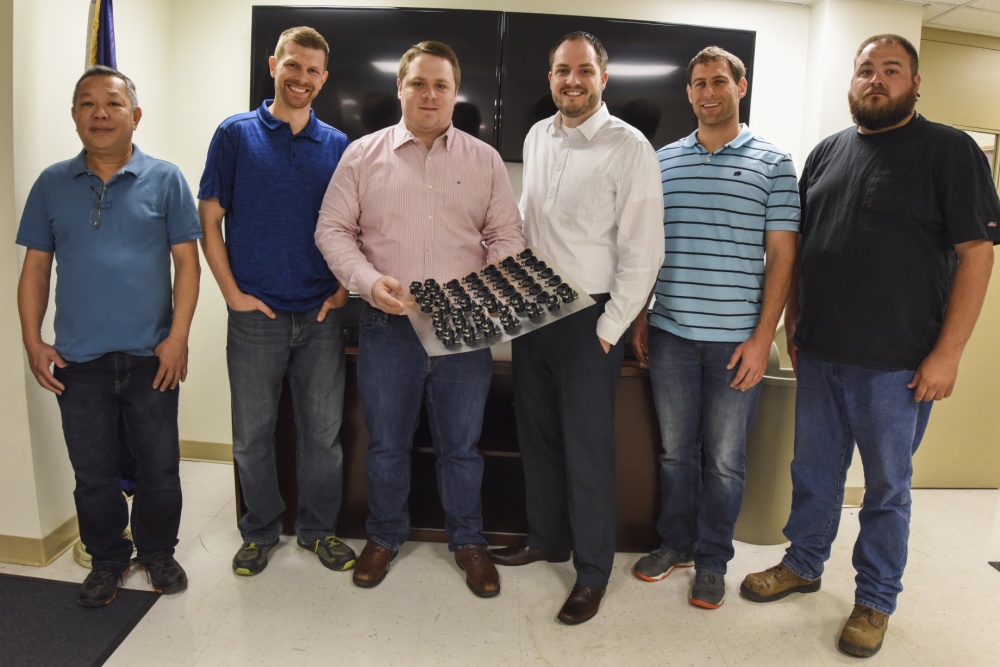The Additive Manufacturing (AM) Warfare Center Working Group (WCWG) of the Naval Sea Systems Command (NAVSEA) has responded to a critical request for a life-saving part from the force’s aircraft division.
The first batch of this part, to be used inside the cabin of T-45 Goshawk training plane, was delivered by NAVSEA within 48 hours of receiving the request from NAVAIR, and has now been employed to help introduce oxygen to aircraft crew.
Reducing PEs
At the end of April 2017, the U.S. Navy concluded a comprehensive review into airflow fluctuations causing physiological episodes (PEs) of crew training in the T-45 Goshawk.
PEs are the physical effects experienced by pilots with a low oxygen supply. They commonly occur when flying at low-altitudes, and can be caused by a number of interrelated issues including air contamination and pressure fluctuation.

With a full investigation into PEs underway, a temporary fix has been issued requiring the addition of a flip-top valve on the oxygen masks worn by aircraft crew. This fix was identified, designed and 3D printed by a team at the WCWG just a month after the initial PE report was released.
Sam Pratt, a mechanical engineer for the Navy who worked on the project comments,
It’s a really cool example of what you can do with additive manufacturing on short notice in the real world. In this case, we’ve got this need. A critical system is down. We need to figure out how we can fix it and get these pilots back in the air. We needed a lot of parts on really short notice.
He goes on to add that, “With AM, you don’t need any tooling, you just need the design” meaning that 3D printed production could save the Navy millions of dollars and months of lead time that it would typically cost to turnaround a product of this kind. Pratt says, “In the span of about a week and a half, we’ve gone from design to approval to manufacturing and then installation.”
In total the AM WCWG team were able to produce 300 of the parts by June 2, using the power of industrial grade polymer 3D printers.

Frank Neukam, supervisor of NSWC Carderock Division’s Engineering Support Group, says,
This is exactly what this type of technology should be used for. I think it came out really well, and it gives us hope for the future, absolutely.
The first 3D printed aircraft component for the U.S. Navy was designed for the T-44 Pegasus plane at Fleet Readiness Center Southeast (FRCSE) in Jacksonville, Florida. The Norfolk Naval Shipyard (NNSY) division of NAVSEA has also used 3D printing to introduce a new tool to onshore and offshore sites and vessels.
Funding for the increased use of 3D printing and additive manufacturing across the Army, Navy and Air Force has also been included in the U.S. military’s proposed $639.1 billion budget for 2018.
For all the latest 3D printing news, subscribe to the most widely read newsletter in the 3D printing industry, follow us on twitter and like us on Facebook.
Featured image: A pilot looks out of the canopy of his F/A-18F Super Hornet aircraft. U.S. Navy photo by Cmdr. Ian C. Anderson


